Day 14 Visit to Otaru
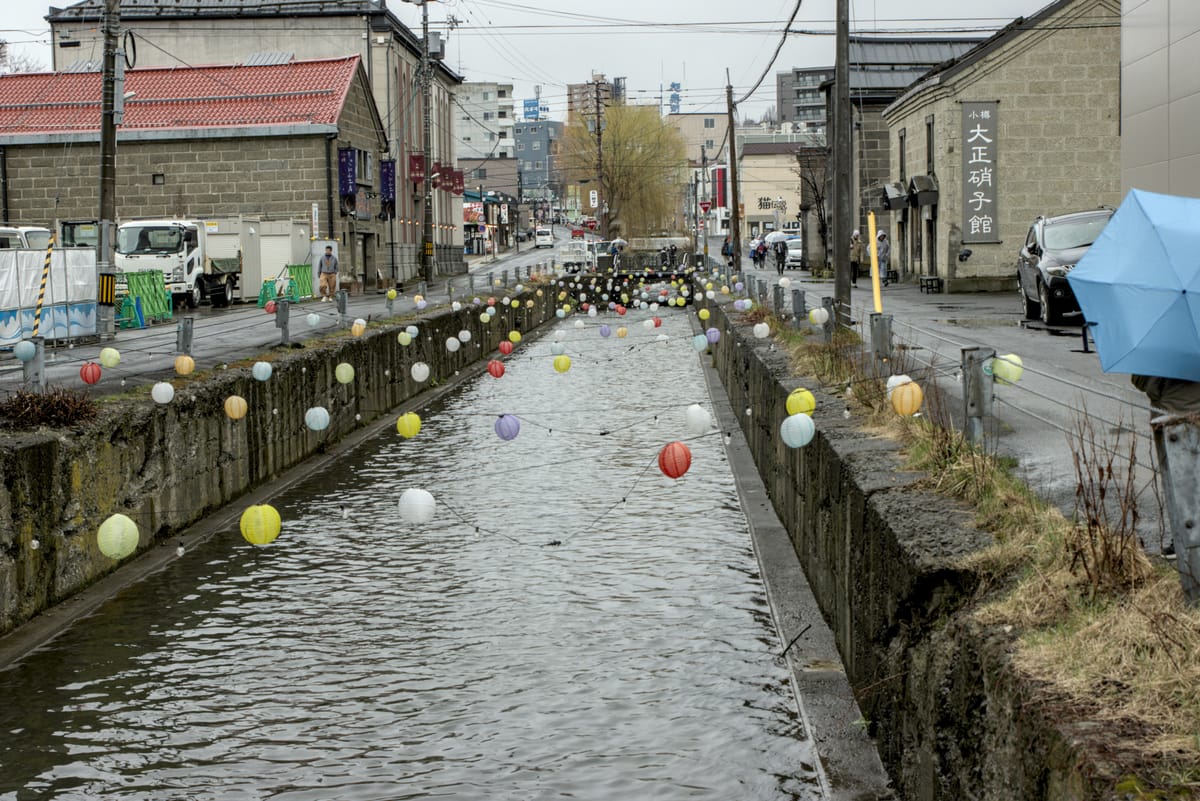
About a half-hour train ride from Sapporo, Otaru is a popular side trip for tourists (both Japanese and foreign). It is most famous for 3 things:
|
- It's canals lined by old warehouses 
|
|
- Glass craft works 
|
|
- Sushi 
|
|
So, off to Sapporo Station to join the crowds heading to Otaru. |

|
It is a pretty gray and drizzly day and the train route parallels the Ishikara Bay, which opens to the Sea of Japan facing Siberia. Lots of open sea out the train window but not much color that day.

|

|
|
We arrived at Otaru, which was the important regional city before Sapporo. It was one of the early treaty ports opened by the dying Shogun government and was one of the few that remained important after the Meiji restoration. It became particularly important when Japan started occupying parts of Korea, Manchuria, and Russian Asian territory after the Russo-Japanese war; that part of Asia is what is across the sea from Otaru. |

|

|
We made our way down to the Canal district, where the Meiji and Taisho-era (late 1800s/early 1900s) warehouses have been turned into tourist attractions. In better weather, there are canal boats which give water tours of the old port. Unfortunately, this was not "better weather." |

|
Not too far from the Canal we found one of our first objectives, a really good sushi place. As mentioned, one of the things Otaru is famous for is it's sushi - it has a street dedicate to sushi. Marie' found a small, unassuming shop just off the main street named Saika that was great. It had my favorite Hokkaido sashimi treat - Ika Somen, fresh squid sliced to resemble noodles; worth the trip. |

|
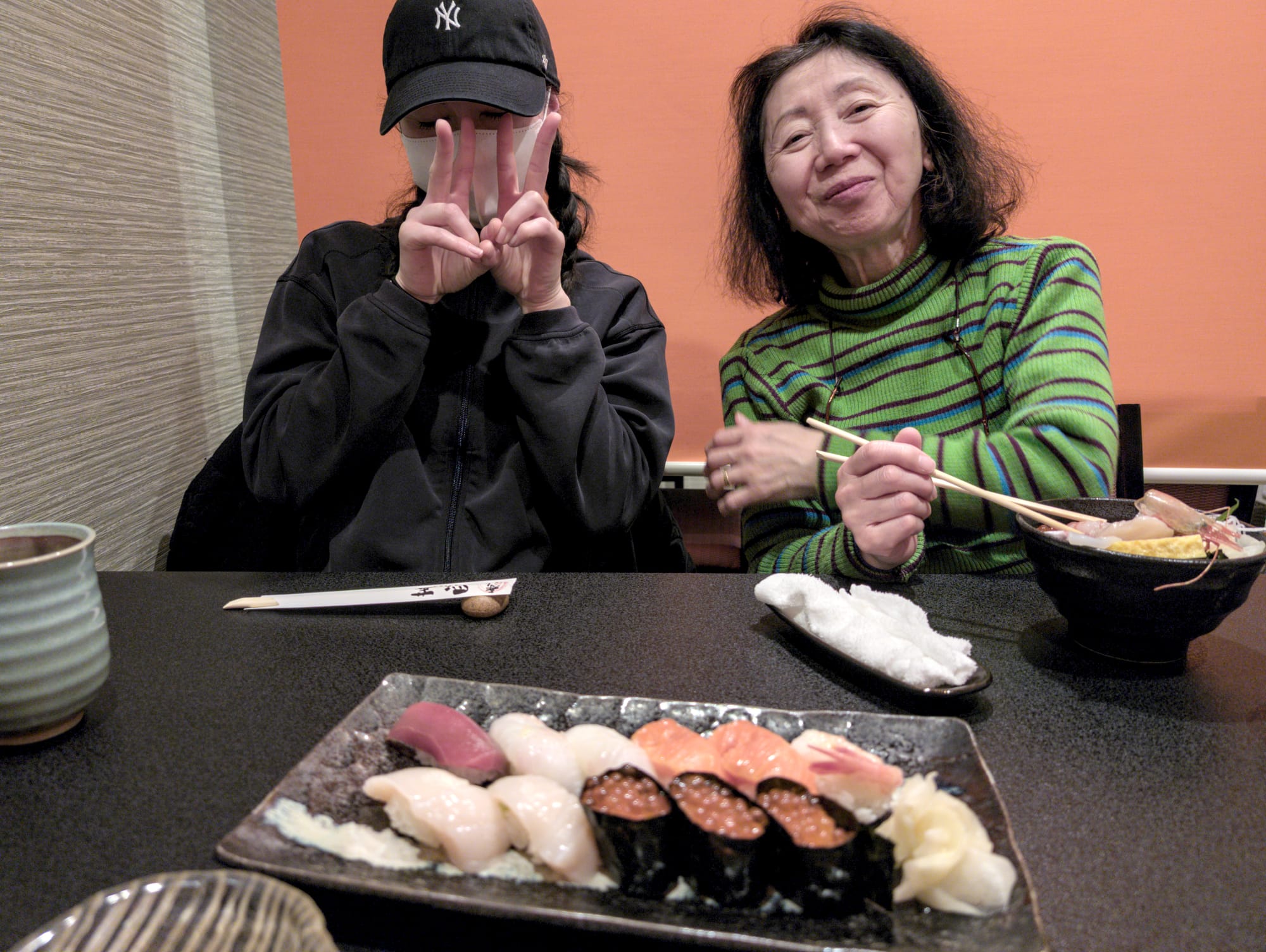
|
Otaru makes use of it's older infrastructure to attract visitors. An example of this is the repurposing of Taisho-era commercial buildings into a set of museums it calls Otaru Art Base. |

|
We chose to visit the Stained Glass Museum.
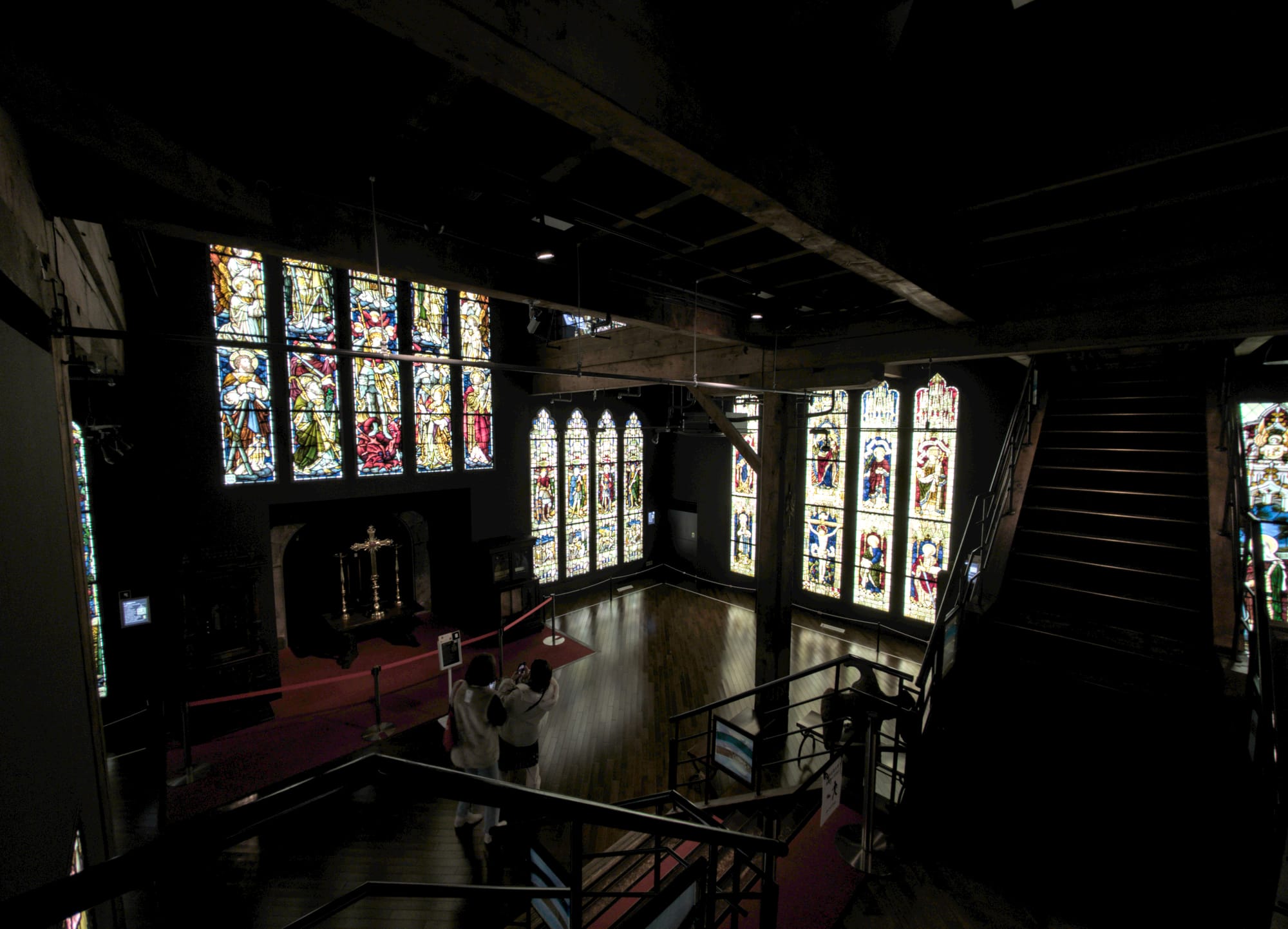

|
The displays make use of the size and darkness of the warehouse it used to be. Most of the windows on display come from a number of English churches that were abandoned in the late Victorian period and purchased by various Japanese collectors. The displays include those on how the originals were made and the steps taken to display them here. |
Back out to the street to wander to visit more repurposed Taisho-era buildings in the canal district...
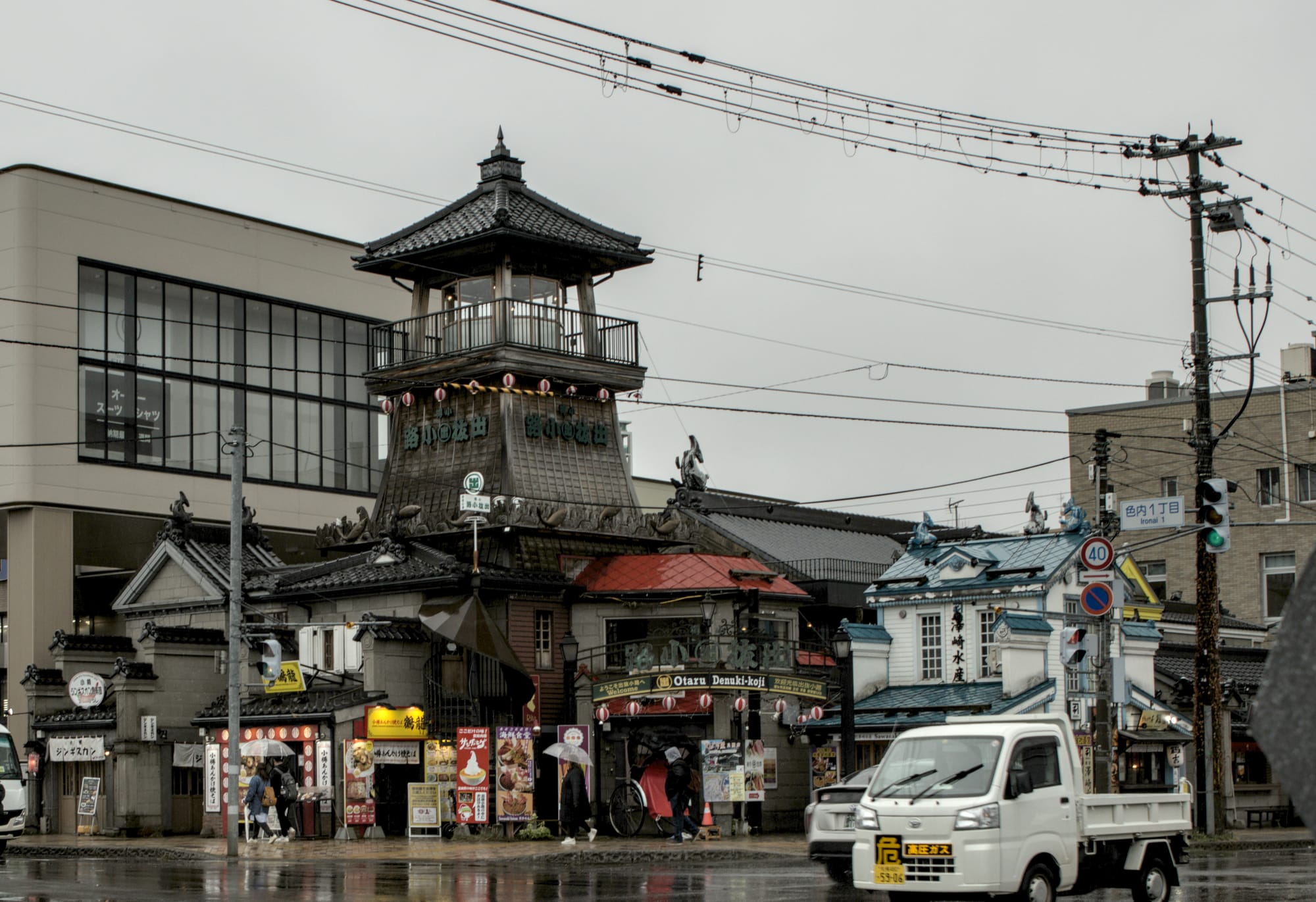

|
Then head up to the Taisho Glass Shops - a series of craft shops occupying more of the Taisho-era buildings. Many of the shops have crafters in the back where you could watch the making new creations. |

|
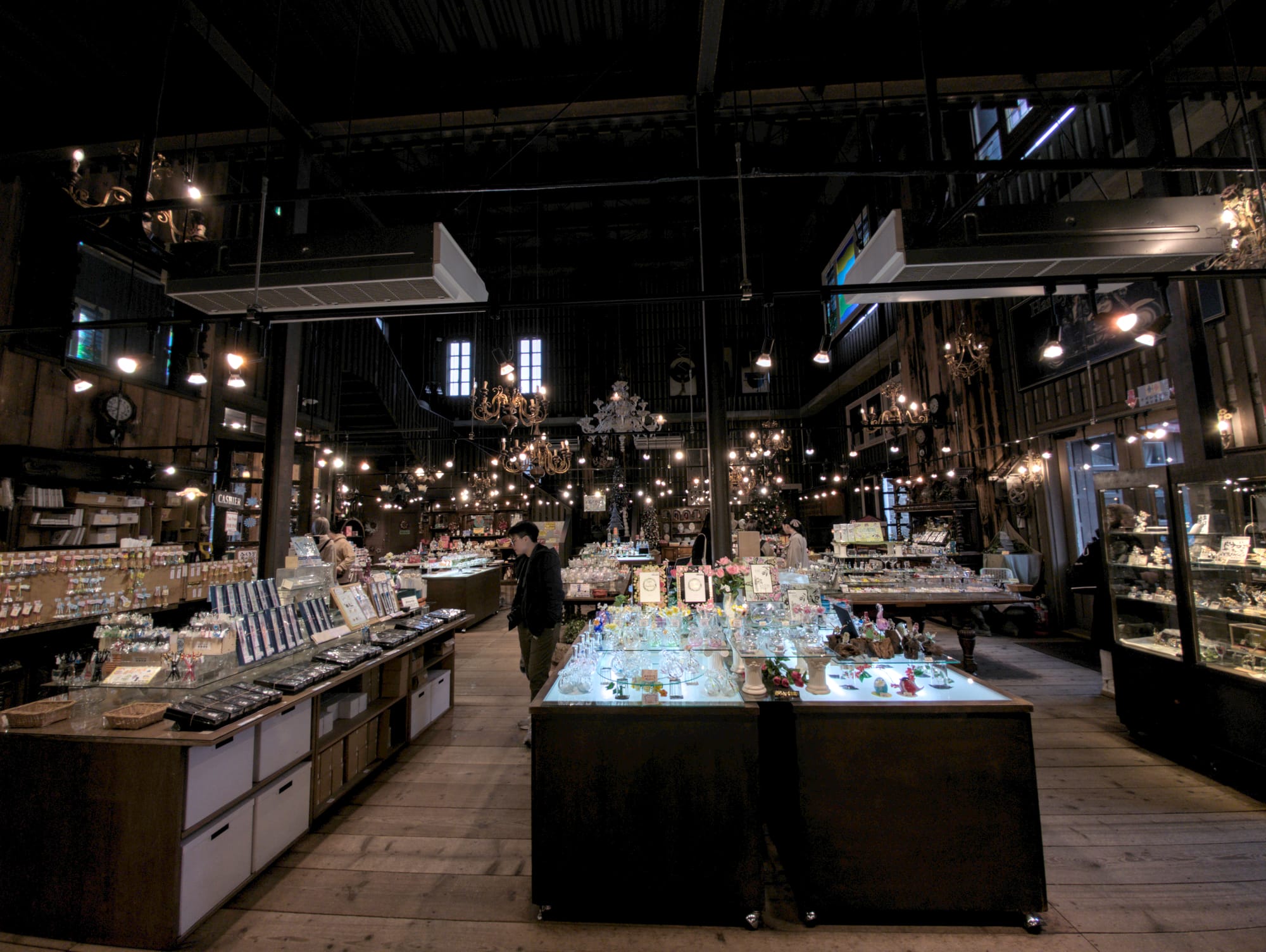

|

|

|
|
And so we head off back home after an interesting day in an interesting little city. I even get a shot of some shutter art for the collection. |

|
There are a bunch more photos around Otaru in the gallery.
